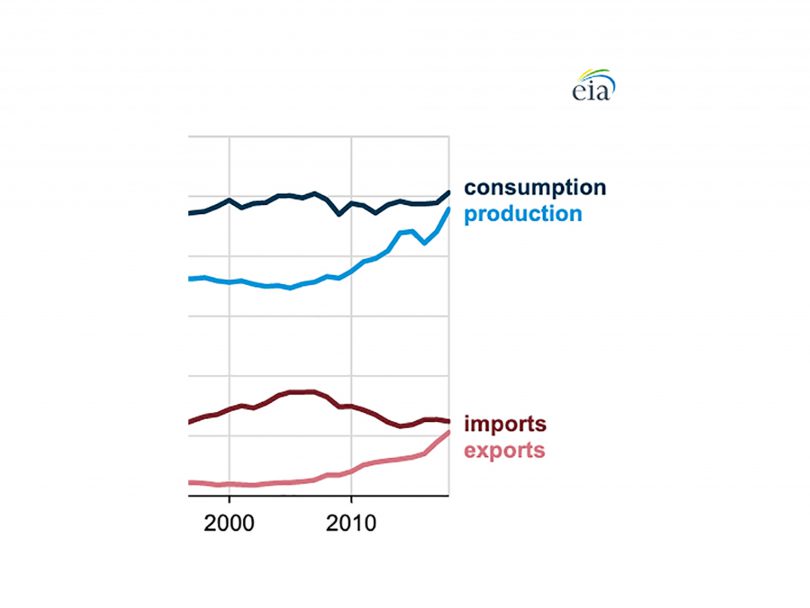Energy consumption in the United States hit a record high in 2018, surpassing the previous record set more than a decade earlier, according to recent findings published by the Energy Information Administration.
Energy use increased 3.6% from 2017, the largest annual increase since 2010, with coal, natural gas and petroleum providing 80% of that total. Consumption reached 101.2 quadrillion Btu (British thermal units or quads). This passed the previous record of 101.0 quads set in 2007. (About 3,400 Btus equal 1 kilowatt-hour.)
The United States also produced a record amount of energy from various sources in 2018, although consumption was about 4% higher than production. That was true, even though energy imports dropped while energy exports increased.
In the U.S., renewable solar and wind energy production did reach a record high, climbing 4% relative to 2017. Combined, solar and wind now provide more energy nationwide than renewable hydropower. Coal consumption decreased for the fifth straight year.
The growth in energy consumption is largely due to the growing U.S. economy. More goods, more exports, more travel and more services mean more fuel and electricity is being demanded.

